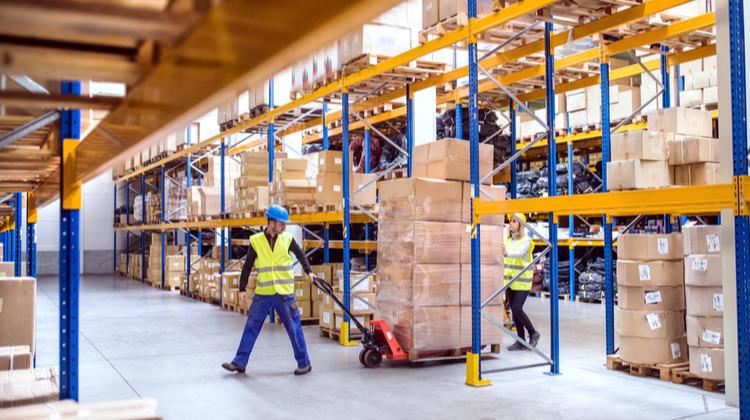Overcoming Bottlenecks in Global Supply Chain Operations

Global supply chains keep businesses running. They move goods from factories to stores. But bottlenecks can slow everything down. These delays cost money and frustrate customers. In this post, we explore how to spot and fix them. We aim to help your operations run smoothly.
What Are Supply Chain Bottlenecks?
A bottleneck is a point where the flow stops or slows. Think of it like traffic on a busy road. One slow truck can back up the whole line. In supply chains, this happens when one part can't keep up. It affects production, shipping, and delivery. Bottlenecks lead to higher costs and lost sales. They can harm your reputation too.
Common Causes of Bottlenecks
Many things cause bottlenecks. Knowing them helps you prepare.
- Supplier problems. If a supplier is late, your production stops. This includes raw material shortages or quality issues.
- Transportation delays. Bad weather, port congestion, or truck shortages slow shipping. Global events like pandemics make it worse.
- Demand spikes. Sudden increases in orders overwhelm your system. You run out of stock fast.
- Labor shortages. Not enough workers mean slower work. This hits warehouses and factories hard.
- Poor planning. Without good data, you can't predict needs. This leads to overstock or understock.
- Equipment failures. Broken machines stop lines. Old tools can't handle big loads.
These causes often link together. For example, a labor shortage can cause transportation delays.
Strategies to Overcome Bottlenecks
You can fix bottlenecks with smart steps. Here are key ways to do it.
Identify and Analyze Bottlenecks
First, find where the problem is. Use data from your operations. Track inventory, shipping times, and orders. Tools like software can spot patterns. Ask your team for input too. They see issues daily.
Once found, study the cause. Is it a supplier? Or bad forecasting? Fix the root problem. Regular checks prevent new ones.
Diversify Your Suppliers
Don't rely on one source. Use multiple suppliers from different places. This reduces risk from one area. If one fails, others step in. It keeps your chain moving.
For example, source materials from Asia and Europe. This spreads out risks like trade barriers.
Improve Demand Forecasting
Guess demand better. Use past sales data and market trends. Software with AI helps predict changes. Adjust your stock levels ahead.
During busy seasons, plan extra. This avoids running low. Good forecasting saves money on storage too.
Optimize Inventory Management
Keep the right amount of stock. Not too much, not too little. Use just-in-time methods. Order items as needed.
Track stock in real time. Automated systems reorder automatically. This cuts waste and speeds up flow.
Enhance Communication and Collaboration
Talk more with partners. Share data on orders and delays. Use shared platforms for updates.
Build strong ties with suppliers. Meet often to solve issues early. Good teamwork fixes problems fast.
Address Labor and Manpower Issues
Workers are key to smooth operations. Shortages slow everything. Partner with a reliable manpower logistics provider to fill gaps quickly. They supply trained staff for warehouses and transport.
In places like Saudi Arabia, industrial manpower solutions KSA help with specialized needs. These services ensure you have enough people during peaks.
Build Flexible Supply Chains
Make your chain adaptable. Have backup plans for disruptions. Use different transport options like air or rail.
Near-shoring moves production closer to markets. This shortens travel and cuts delays. It also boosts control over quality.
The Role of Technology in Fixing Bottlenecks
Technology changes how we handle supply chains. It makes things faster and smarter.
- AI and predictive analytics. These tools forecast issues before they happen. They analyze data to warn of delays.
- IoT devices. Sensors track goods in real time. You know where items are always.
- Blockchain. It secures data sharing. Everyone sees the same info without errors.
- ERP systems. These integrate all parts of your business. They streamline orders and inventory.
Invest in these tools. They spot bottlenecks early. Over time, they save costs and improve service.
Start small. Pick one tool that fits your biggest problem. Train your team to use it well.
Real-World Examples of Success
Many companies have beaten bottlenecks. Take a tech firm hit by chip shortages. They diversified suppliers across countries. This kept production going during global disruptions.
A retailer faced demand spikes during holidays. They used AI forecasting. It helped stock the right items. Sales rose, and waste dropped.
In logistics, a company dealt with port delays. They switched to near-shoring in Mexico. Shipping times fell by half. Customers got goods faster.
These stories show action works. Learn from them to fit your needs.
Measuring and Improving Over Time
Track your progress. Use key numbers like delivery times and costs. Set goals and check monthly.
If bottlenecks return, adjust plans. Continuous improvement is key. Use methods like Theory of Constraints. Focus on the weakest link first.
Train your staff often. New skills help them handle changes. A strong team builds a tough supply chain.
Conclusion
Bottlenecks challenge global supply chains. But you can overcome them. Start by spotting causes. Then use strategies like diversification and technology. Address manpower needs with expert help.
A smooth supply chain boosts your business. It pleases customers and cuts costs. Take steps today. Your operations will thank you.
With these tips, you're set for success. If you face issues, seek expert advice. Stay proactive for a resilient future.
- Art
- Causes
- Crafts
- Dance
- Drinks
- Film
- Fitness
- Food
- Games
- Gardening
- Health
- Home
- Literature
- Music
- Networking
- Other
- Party
- Religion
- Shopping
- Sports
- Theater
- Wellness


